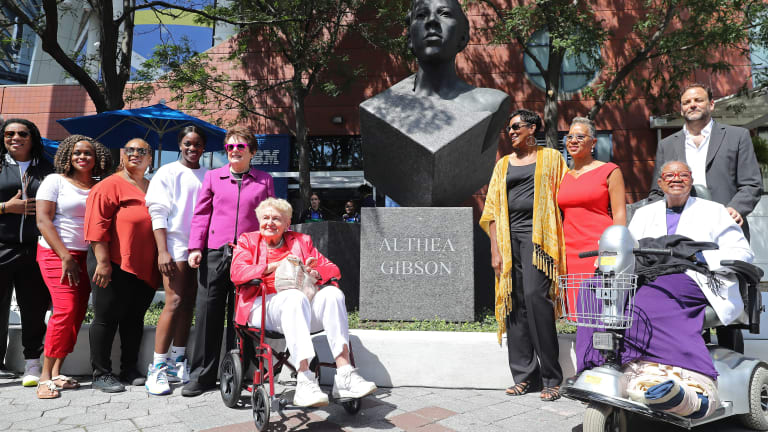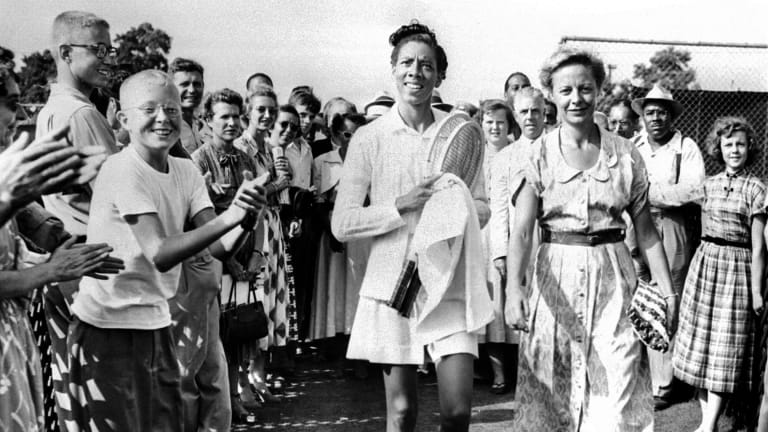Black History Month
The Street Has Her Name: Althea Gibson continues to show us the way
By Feb 09, 2023Black History Month
‘The Cookout,’ honoring Black history in tennis, starts in Southern California, with an eye on impactful growth
By Feb 27, 2025Black History Month
Revisiting Arthur Ashe's famous 1975 Wimbledon win, 50 years later
By Feb 19, 2025Black History Month
We can’t tell athletes to “stick to sports” when gun violence crashes their own party
By Feb 16, 2024Black History Month
Coco's milestone teenage moments: Gauff, 19, wins her first Grand Slam title at the US Open
By Feb 16, 2024Black History Month
"End gun violence," Coco Gauff implored two years ago in Paris—a message that resonates in sports again today
By Feb 15, 2024Black History Month
Coco Gauff's milestone teenage moments: a powerful speech protesting police brutality
By Feb 14, 2024Black History Month
Coco Gauff's milestone teenage moments: the 15-year-old beats Venus during stunning Wimbledon run
By Feb 13, 2024Black History Month
Coco Gauff's milestone teenage moments: the 8th grader saves 9 match points in US Open junior final
By Feb 12, 2024Black History Month
Ben Shelton, Arthur Fils added to HOF's 'Breaking Boundaries' digital exhibit
By Feb 10, 2024The Street Has Her Name: Althea Gibson continues to show us the way
The first Black player to win a Grand Slam title was recognized in Harlem on what would have been her 95th birthday, but there is still more to be done.
Published Feb 09, 2023
Advertising
Advertising

In 2019, a statue of Gibson was erected at the USTA Billie Jean King National Tennis Center. While there are many today who do not know Gibson's name, organizers hope this year's event in Harlem and several others in the pipeline will begin to change that.
© Getty Images
Advertising

In the face of substantial adversity, Gibson earned respect with her athletic prowess and boundless drive. “I really wasn't the tennis type,” Gibson wrote in her autobiography. “I kept wanting to fight the other player every time I started to lose a match.”
© AFP via Getty Images